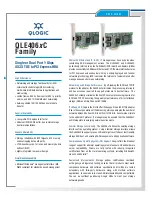
You can always copy HP SUM to the target servers and execute using the local installation method.
Troubleshooting HP SUM in IPv6 Windows Server 2008 environment
To validate that the IPv6 network is configured correctly for HP SUM support, you must verify the
following based on your operating system version.
•
Validate that you can ping the remote target server. With Windows operating systems, you
can use the ping command to ping IPv6 addresses:
ping <ipv6 address>
•
Ensure you can ping the IPv6 loopback address:
ping ::1
•
Use the DNS hostname instead of IPv6 address to ensure the address is correct.
•
Verify that you can connect to the admin$ share using the credentials within HP SUM by
issuing the following command at a console prompt:
net use * \\<ipv6-address>.ipv6-literal.net\admin$ /user:<username>
net use * \\fec0::2.ipv6-literal.net\admin$ /user:administrator
You might need to provide the password if you use a user name that is different from the one
you used to log in to the local system. All network shares require the use of the .ipv6-literal.net
name string to be properly configured by Windows.
After you validate you can access the admin$ share on the remote target server, HP SUM
works unless there are other network or hardware issues.
Troubleshooting HP SUM in IPv6 Red Hat and Novell SUSE-based Linux environments
•
Verify that you can establish an SSH connection to the remote target server using the credentials
within HP SUM by issuing the following command at a console prompt:
ssh <ipv6 address>
SSh 2101:db8:0:1::9
You must enter the root password for the target Linux server at the console to complete the
IPv6 connection.
•
Validate that you can ping the remote target server. In Linux, you need to use the ping6
command to ping IPv6 addresses:
ping6 <ipv6 address>
.
•
Ensure you can ping the IPv6 loopback address:
ping6 ::1
•
Use the DNS hostname instead of IPv6 address to ensure the address is correct.
•
Use
ipconfig
to validate you have IPv6 addresses assigned to your NICs. For more
information about troubleshooting your configuration, see the
Linux IPv6 How-To
.
•
For more information about setting up and troubleshooting IPv6 networks, see
Getting Around
IPv6
by Carla Schroder.
•
Move back to an IPv4 network address to ensure HP SUM properly finds the remote target
server without any issues.
•
HP SUM can always be copied to the target servers and executed using the local installation
method. For more information, see
“Deployment modes” (page 11)
.
64
Troubleshooting














































